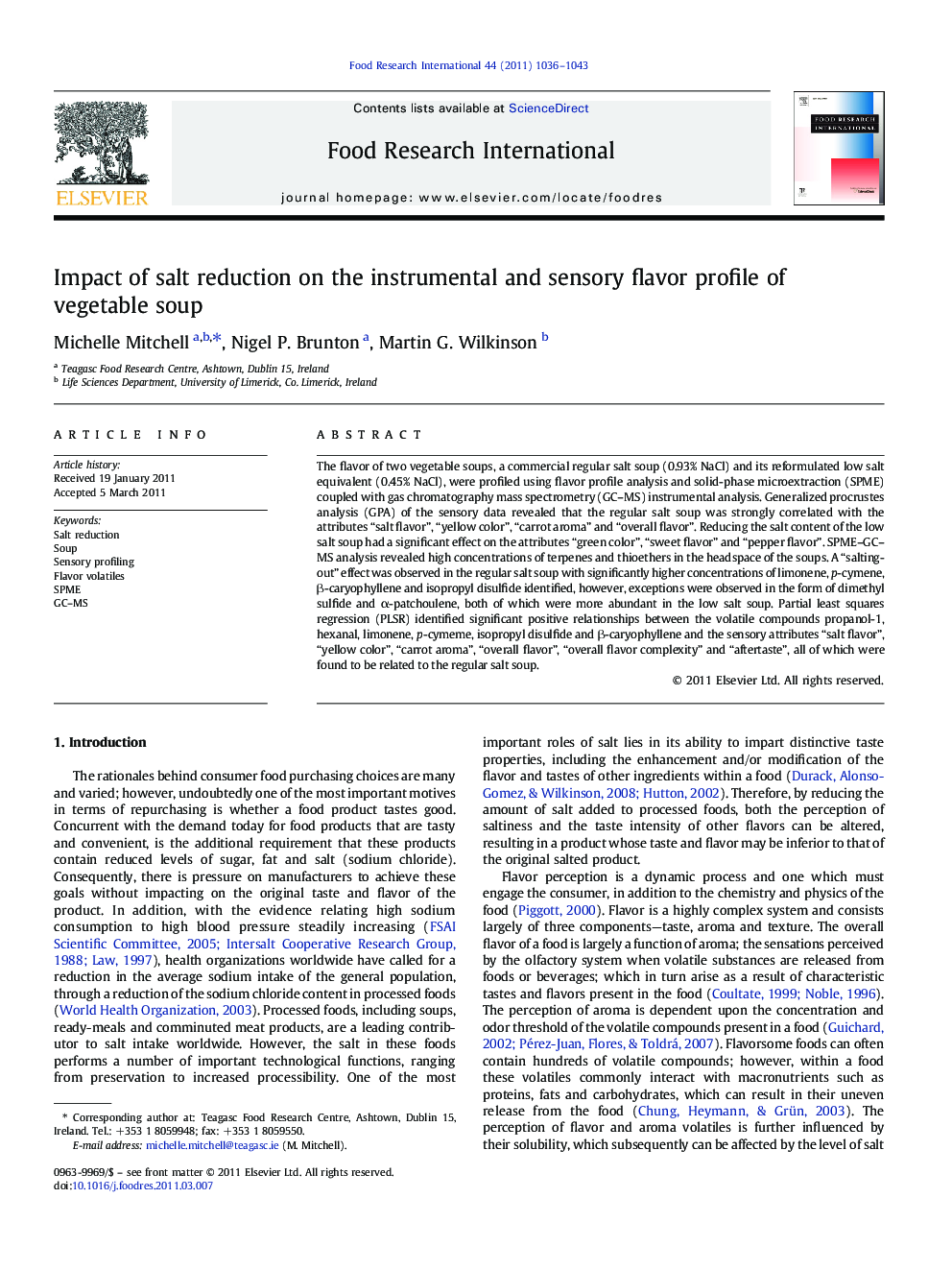| Article ID | Journal | Published Year | Pages | File Type |
|---|---|---|---|---|
| 4561864 | Food Research International | 2011 | 8 Pages |
The flavor of two vegetable soups, a commercial regular salt soup (0.93% NaCl) and its reformulated low salt equivalent (0.45% NaCl), were profiled using flavor profile analysis and solid-phase microextraction (SPME) coupled with gas chromatography mass spectrometry (GC–MS) instrumental analysis. Generalized procrustes analysis (GPA) of the sensory data revealed that the regular salt soup was strongly correlated with the attributes “salt flavor”, “yellow color”, “carrot aroma” and “overall flavor”. Reducing the salt content of the low salt soup had a significant effect on the attributes “green color”, “sweet flavor” and “pepper flavor”. SPME–GC–MS analysis revealed high concentrations of terpenes and thioethers in the headspace of the soups. A “salting-out” effect was observed in the regular salt soup with significantly higher concentrations of limonene, p-cymene, β-caryophyllene and isopropyl disulfide identified, however, exceptions were observed in the form of dimethyl sulfide and α-patchoulene, both of which were more abundant in the low salt soup. Partial least squares regression (PLSR) identified significant positive relationships between the volatile compounds propanol-1, hexanal, limonene, p-cymeme, isopropyl disulfide and β-caryophyllene and the sensory attributes “salt flavor”, “yellow color”, “carrot aroma”, “overall flavor”, “overall flavor complexity” and “aftertaste”, all of which were found to be related to the regular salt soup.
